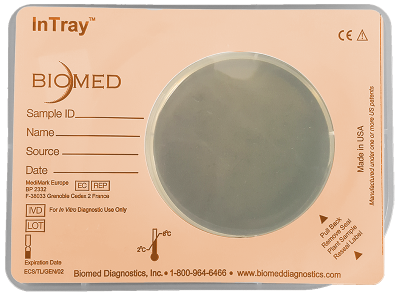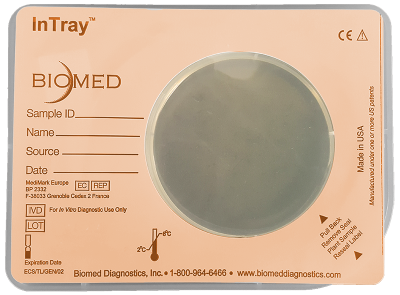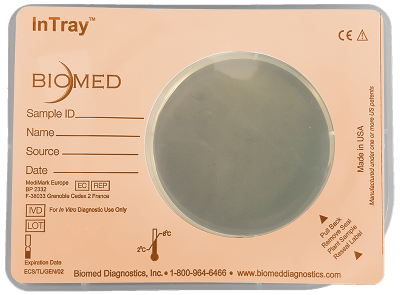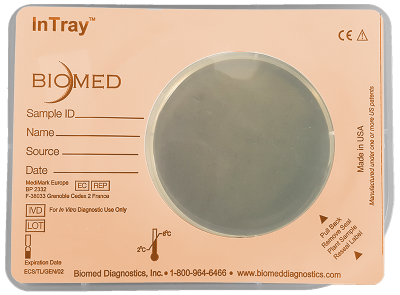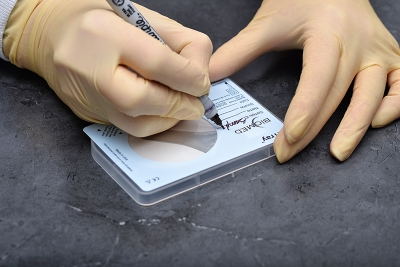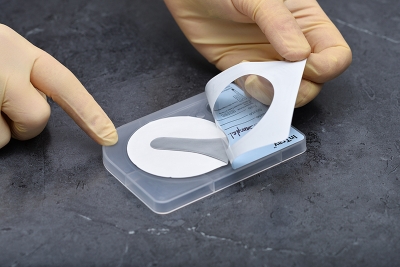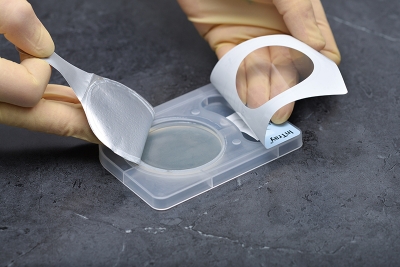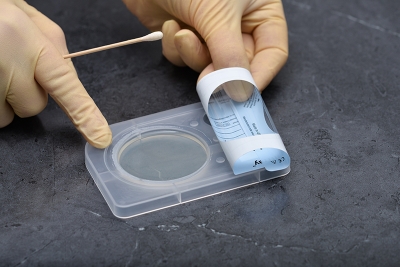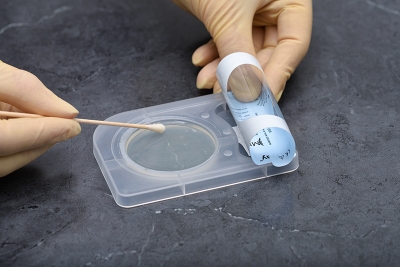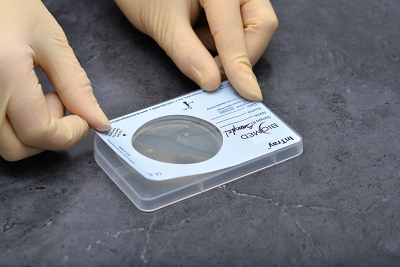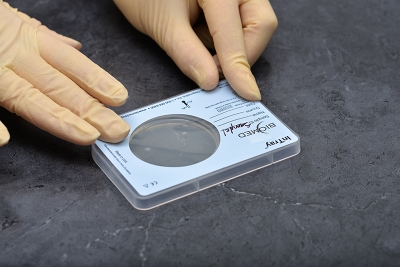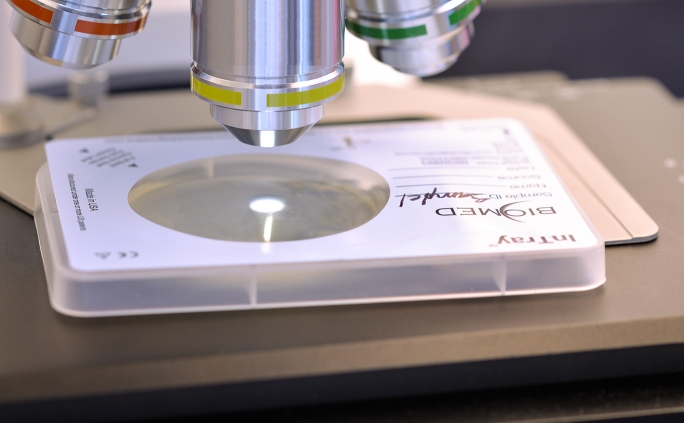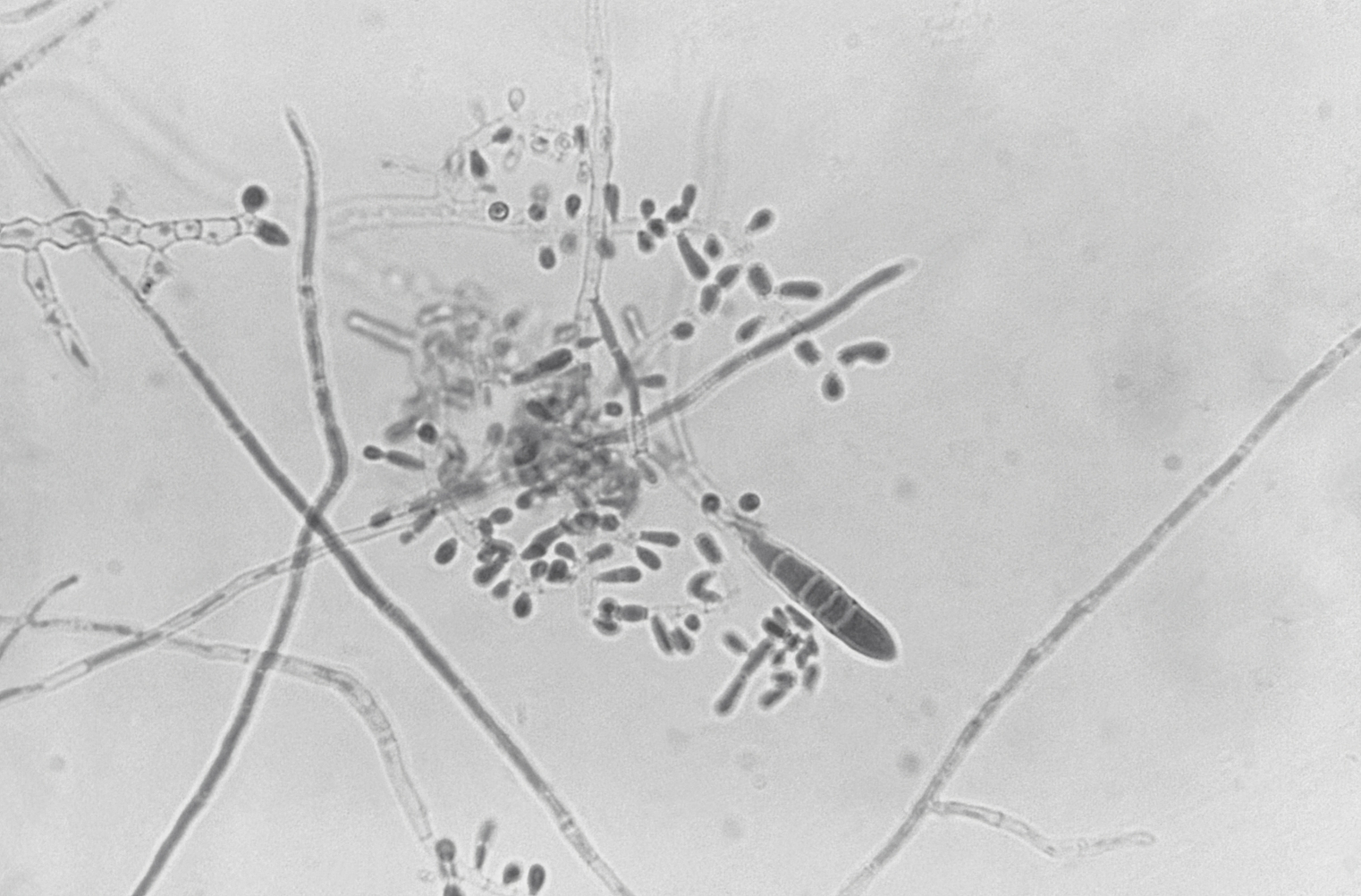
Presumptive results
in your own clinic
Ready to use
Easy to Identify
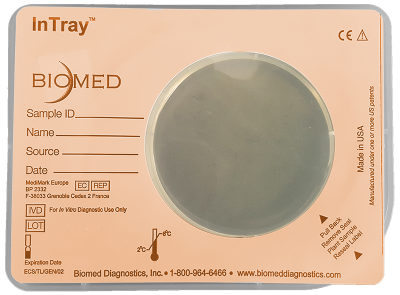

27 month Shelf Life
Categories
InTray® DM-FungID™
InTray DM-FungID is an enriched dermatophyte medium used to aid in the detection of dermatophytes from clinical specimens with mixed micobiota.
Dermatophytes are fungi in the genera Microsporum, Tricophyton and Epidermophyton. They are capable of metabolizing keratin found in skin, hair and nails of living hosts. The fungi characteristically may invade the cutaneous tissue of the living host but rarely penetrate the subcutaneous tissue. Tinea and ringworm are two terms commonly used to describe dermatophytes.
InTray DM-FungID is formulated to produce a red color in the presence of growing dermatophytes. Moreover, the medium is formulated to produce distinctive colony growth with typical identifying characteristics both macro- and microscopically. The medium inhibits most Gram-positive and Gram-negative bacteria, yeast and saprophytic fungi. It is a single exposure system with dynamic built-in components and features that are designed for user compatibility and ease of detection.
See all Fungal and Dermatophyte Culture tests in the new FungID product line ►
Specifications
| Product Principle |
|
|||||||||||||||||||||||||||
|---|---|---|---|---|---|---|---|---|---|---|---|---|---|---|---|---|---|---|---|---|---|---|---|---|---|---|---|---|
| Simple Convenience |
|
|||||||||||||||||||||||||||
| Accurate Detection | Specially formulated medium is selective for positive-growth for strains of multiple dermatophytes; Accurately identify dermatophytes to begin effective treatment sooner.
|
|||||||||||||||||||||||||||
| Time to Result | Incubate inoculated trays for up to 14 days at 18-30°C, in the dark. Observe the trays daily for color changes, through the clear viewing window. |
|||||||||||||||||||||||||||
| Storage | InTray DM-FungID expires 27 months from the date of manufacture. Upon receipt, store InTray DM-FungID at 18-25°C. Avoid refrigeration, freezing or prolonged storage at temperatures greater than 40°C. Do not use an InTray DM-FungID if the medium shows signs of deterioration or contamination. |
|||||||||||||||||||||||||||
| Specimen |
|
If a fungal infection is strongly suspected and the culture test result is negative, it may be appropriate to retest giving more care to specimen collection. Optimally, simultaneously inoculate samples on both InTray DM-FungID & InTray SAB without antimicrobials (e.g., for some pathogenic fungi inhibited by antimicrobials)
Transfer of fungal growth to slide examination: Stained slide preparations can be made as appropriate based on 10x Obj. examination of InTray SABFungID. InTray Potato Dextrose Agar (PDA) can be used to induce sporulation
Features and Benefits
Shelf-life and durability
- Designed for durability and stackable incubation
- Extended 27-month shelf life
No re-plate or wet mount
- Once inoculated, no other culture preparation is required... saving time and money.
- Designed for specimen collection/inoculation at point-of-care, a fully enclosed system for transport, incubation, result and microscopic observation.
- The sealed prepared media device is selectively formulated for accurate detection and identification of pathogens and non-pathogens.
Key Features
- Fully enclosed cassette with air filtration system
- Nutritive culture colony growth medium, formulated for selectivity and specificity
You'll immediately experience a reduction in:
- Time-to-result
- Cost of laboratory materials
- Medical waste
- Risk of exposure or contamination
Looking for additional information? Check out of FAQ page here ►
Articles and Whitepapers
Singh S, Beena P M. Comparative study of different microscopic techniques and culture media for the isolation of dermatophytes. Indian J Med Microbiol [serial online] 2003 [cited 2019 May 9 ];21:21-24
Available from: http://www.ijmm.org/text.asp?2003/21/1/21/8310
Diagnostic microbiology in veterinary dermatology: Present and Future
Guardabassi_et_al-2017-Veterinary_Dermatology
Principles and Practices of Veterinary Technology
Margi Sirois; Elsevier Health Sciences, Jul 19, 2016
Presentations
Regulatory
⚠ WARNING: This product can expose you to chemicals including Cycloheximide, which is known to the State of California to cause birth defects or other reproductive harm. For more information go to P65Warnings.ca.gov.
Ordering Information
To order, please:
